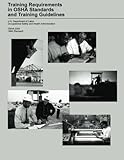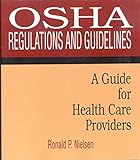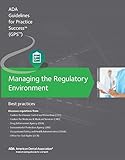Here are a few steps that you can take to ensure that your equipment is safe to use and up to code at all times.
Only Work with Licensed and Insured Professionals
When it comes to your company’s equipment, you should never cut corners. Everyone you work with must be fully licensed and insured. Before working with any outside contractors or companies, you should ask for a list of references and proof of their insurance.
Most of those professionals have comprehensive liability insurance that covers issues such as breakdowns and minor fines. Properly vetting those parties is especially important if you plan on purchasing used equipment. You might consider hiring business brokers if you’re looking for help making sure your business is airtight.
Carefully Adhere to the Manufacturer’s Instructions
Properly maintaining your equipment could save you thousands in the coming years. Most major equipment manufacturers guarantee that their products adhere to all safety codes, and you must carefully maintain that equipment if you want to keep it up to code.
You could also inadvertently void the warranties if you don’t follow the service and maintenance instructions. Depending on where you purchase your equipment, you might be able to extend the warranties or purchase long-term service plans as well.
Thoroughly Train Your Employees
Developing a comprehensive training program is another important step in this process. If you don’t have a team that is capable of training your employees, then you will need to consider hiring an outside corporate training firm. One of those firms can help you create a robust training program for any employees who will be using your equipment. They will also be able to give you suggestions on how to properly maintain the equipment and improve employee safety.
Research OSHA’s Website
Well before you purchase any new equipment, you should double-check OSHA’s laws and regulations. In addition to finding that information online, you can also request a physical copy of the Federal Register that outlines all new rules and regulations. Even though many states and municipalities have their own safety boards, most of those organizations base their laws off OSHA’s regulations. Many of them also work directly with the Department of Labor to come up with OSHA-approved state plans.
Equipment that is up to code is going to be safer to use and last much longer. All safety codes, laws, and regulations can be found on OSHA’s website, but you might also be able to obtain a copy from your fire marshal or a local building inspector.
Image Credit: Pixabay
nice post? … share it!
| google+ |
STEPS: exit planning (what’s needed)
- U.S. Department of Labor, Occupational Safety and Health Administration
- Publisher: CreateSpace Independent Publishing Platform
- Paperback: 116 pages
- Used Book in Good Condition
- Ronald P. Nielsen
- Publisher: Delmar Cengage Learning
- American Dental Association
- Publisher: American Dental Association
- Edition no. 1 (09/05/2017)
- CCPS (Center for Chemical Process Safety)
- Publisher: Wiley-AIChE
- Edition no. 2 (03/08/2011)
- Manufactured by the #1 leading manufacturer of First Aid Kits in the USA. 326 pieces of comprehensive first aid treatment...
- Meets or exceeds OSHA and ANSI 2009 guidelines for 100 people. Meets United States FDA Regulatory Standards as a Medical...
- Fully organized interior compartments provides quick access. Rugged, sturdy, high density plastic case is impact resistant
Last update on 2019-04-01 / Affiliate links / Images from Amazon Product Advertising API
-------------------------------------------------------------------------------------------------------------
-------------------------------------------------------------------------------------------------------------
home remodeling reference (links to internal page)
 |
 |
 |
 |
| directory | photos | forms | guide |
Helpful article? Leave us a quick comment below.
And please share this article within your social networks.


















TIPS: business exit model (pdf)